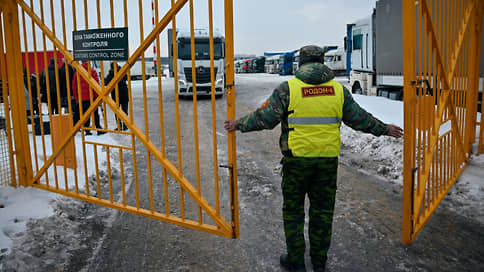Customs has been instructed to combat gray deliveries through the EAEU countries
[ad_1]

Increasing the customs plan for transfers to the budget this year will require strengthening customs administration and additional measures to “mobilize” revenues to the treasury, Finance Minister Anton Siluanov said at the FCS board. The department proposes to find new funds by combating gray schemes for the supply of cars, equipment and electronics to the Russian Federation through other EAEU countries – in this case, indirect tax (VAT) collections fall, and there are also risks of understating customs values. The volume of imports, on which it is planned to levy a growing share of duties, is, however, already declining – at the beginning of the year it was 6-7% lower than a year ago. At the same time, revenues from oil duties fell out of the total volume of revenues administered by the Federal Customs Service this year, which will require an additional increase in import taxes.
At the end of 2023, customs transferred 6.6 trillion rubles to the budget, which is 2.5% higher than the plan, Finance Minister Anton Siluanov said on Thursday. annual board Federal Customs Service (FCS). The forecast target for transfers from the Federal Customs Service to the budget for this year, according to him, is “quite ambitious” – more than 7 trillion rubles, but strengthening customs administration measures and “proposals for mobilizing opportunities for revenue to the treasury”, developed jointly with customs, will help fulfill it.
We are talking about the fight against the gray import of goods into the Russian market through other EAEU countries – the union has a single customs space, and there is no customs control when crossing internal borders.
“The service has identified tax evasion schemes (primarily indirect taxes) when moving goods from the EAEU to Russian companies that do not carry out real economic activities – the number of goods imported in this way is growing, we are not receiving VAT, and for this we need a barrier,”— Anton Siluanov explained. It is also proposed to strengthen the work of mobile groups of customs officers – they will more often check deliveries of high-margin goods, including cars, equipment and electronics.
In addition, the Ministry of Finance calls for combating the understatement of customs value for the sale in the Russian Federation of goods undergoing clearance in the “five” countries; for this, the department proposes to create a mechanism to control the use of uniform customs value indices: without it, it is impossible to apply a unified risk management system.
Problems also arise with different classifications of goods – the import of the same goods can be carried out according to different product nomenclature codes. The EEC has already reported that cost indicators have been defined for 90% of commodity items; countries are also preparing a unified standard for carrying out customs operations and customs control, including through the unification of approaches to the risk management system.
Note that the announced tightening of approaches to customs administration changes the position that the service has adhered to over the past two years, when the main task was to facilitate import supplies against the backdrop of sanctions restrictions and expand the capacity of border crossings against the backdrop of a reorientation of goods flows from the west to the south and east.
In many cases, an increase in supplies through the “five” countries was a necessary measure due to restrictions on direct supplies to the Russian Federation (exports to the EAEU countries, for example, were increased by almost all European countries).
“Customs did not allow trade in important goods to fall,” noted acting head of the Federal Customs Service Ruslan Davydov, pointing out that the volume of benefits for participants in foreign trade activities as part of the measures taken by the government amounted to 1.65 trillion rubles. over two years, including in 2023 – 530 billion rubles. Foreign trade turnover, judging by the report, decreased last year by only 0.3%, but in terms of money the drop was more significant – minus 16.2%, while exports decreased by 28.3%, imports increased by 11.7 % (in tons, the volume of supplies abroad decreased by 1.3%, while imports increased by 7.9%). The overfulfillment of the budget revenue plan was primarily due to the increase in import fees – they turned out to be 27% higher than the forecast (total revenues exceeded the 2022 level by 401 billion rubles). In terms of exports, on the contrary, the service lost 1.14 trillion rubles, which fell due to the suspension of gas supplies through the Nord Stream pipeline.
This year, the share of import duties in total revenues will be even higher due to the completion of the tax maneuver.
“We now do not receive duties on oil and petroleum products at all, export revenues continue to decline – flexible duties are insignificant and do not in any way compensate for losses (in the form of duties) from the tax maneuver,” explained Ruslan Davydov. Import volumes at the beginning of 2024 turned out to be 6-7% lower than last year, the decrease in weight was small, in value – more, all fluctuations are related to energy prices, he estimated.
In January, according to the service, Russian trade turnover decreased in annual terms by 12.8%, to $48.7 billion, including exports decreased by 14.2%, to $28.7 billion, and imports by 10.6 %, up to $20 billion. The situation with payments in the Federal Customs Service is still assessed as “tense, but not bad” – the volume of receipts since the beginning of the year amounted to 1.4 trillion rubles, but the monthly dynamics of trade in these months is greatly influenced by the Chinese New Year, and deliveries are declining with a lag: last year the decline was noticeable in February, this year in early March, Mr. Davydov explained. The trend will be more clearly visible by the end of May, he suggested.
[ad_2]
Source link






